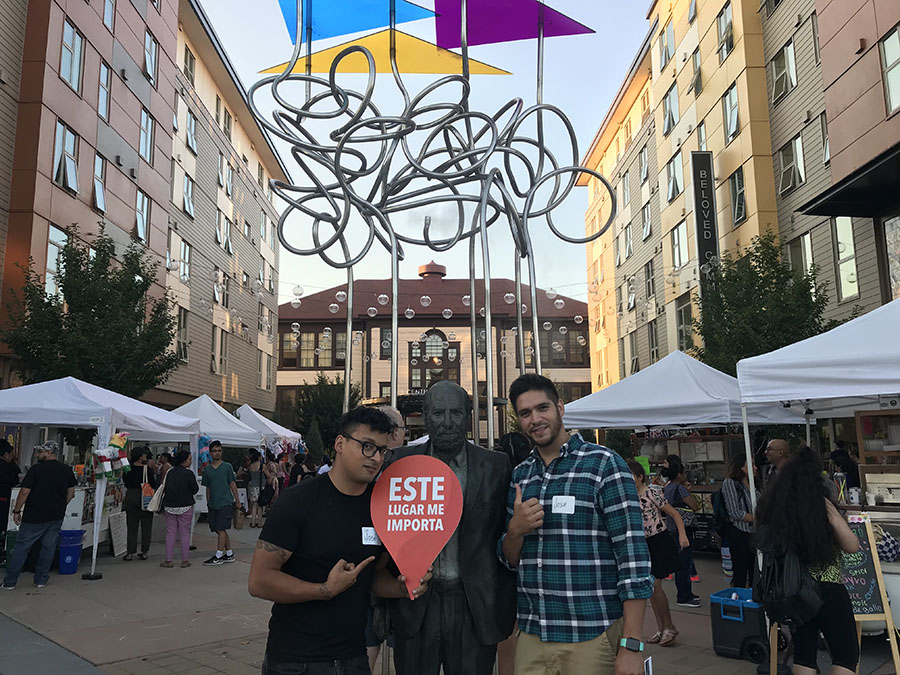Guest Post: Latino Heritage Sites in King County

Revisiting Washington is a web-based update to the 1941 Washington, A Guide to the Evergreen State, published through the Federal Writers’ Project American Guide Series. With support from 4Culture and other unders, the Washington Trust for Historic Preservation has complemented the original text with new tours focused on Latino and Asian/Pacific Islander heritage, and a tour highlighting sites associated with African-American heritage is in the works for 2020. Here, Chris Moore, Executive Director of the Washington Trust, provides insight into how the project took shape:
Over a decade ago, we began work to digitize the rich content included in the 1941 Federal Writers’ Project American Guide Series: Washington, A Guide to the Evergreen State. As part of this special project beneath the umbrella of the Works Progress Administration, writers and photographers set off across the state to capture a moment in time and to document 1941 life in Washington. Predating the interstate freeway system, intrepid travelers took what today we call the “slow roads.”
It turns out these slow roads – what today essentially constitutes our state route system – provided a poignant portrait of the state. Tours in the guidebook meander through dense forests, agricultural areas, river valleys, and high plains, with associated text providing an informative backdrop as you travel from one landscape to the next. Traversing all 39 counties, these tours often terminated (or originated, depending on which direction you were headed) in our county seats. The guide text includes descriptions of key buildings and landmarks in these cities and towns, providing a true sense of main street life in our smaller, more rural communities.
We distributed the first iteration of Revisiting Washington as a CD-ROM which, given the speed technology progresses, proved to be obsolete nearly the day it was completed. Learning from this, we set out to develop a web-based version, available as a phone app with the capability to be updated and added to. Working on this version of the project, it became very clear that elements of our state’s history were glaringly missing. The narrative voice from 1941 did indeed provide rich content – valuable information for understanding that point in time. But it was not an especially diverse illustration of Washington State life. Aside from brief mentions, communities of color, non-European immigration, and tribal representation are relatively absent from the guide.
To address this, we envisioned a series of tours focused on sites associated with communities that have impacted Washington in deep and transformative ways. Maintaining the 1941 guidebook protocol, the new tours would be geographically discrete and focused on actual locations able to still be experienced by road trippers. The first of these focused on Japanese-American heritage on Vashon Island, highlighting nine sites, several of which are farms documenting the Japanese and Japanese-American impact on the island’s agricultural practices and economy. The second endeavored to highlight sites in the Yakima Valley associated with Latino heritage. Another 10 sites were added, again largely agricultural but including places important as social gathering spaces and cultural centers for the valley’s burgeoning Latino community.
Most recently, we completed a King County-based tour of sites representing Latino heritage. Given migration patterns, there are clear ties between the county’s flourishing Latino communities and the history of migrant labor supporting agriculture in the Yakima Valley. Over two dozen sites cover education, civil rights, religion, local business, and education. From South Park to White Center, from the Central District to the University District, extant sites featured on the King County tour cover a broad range of issues. Exclusive video interviews provide additional insight for those interested.
These tours are critically important elements of our Revisiting Washington platform. They highlight existing places and buildings that serve as anchors for the communities they represent despite being overlooked as “architectural” landmarks. They give bricks-and-mortar presence to stories too often hidden from mainstream narrative. This work coincides with efforts by the National Park Service to more fully understand and acknowledge the contributions of underrepresented communities. NPS funding has supported survey work for Latino and Asian/Pacific Islander heritage in Washington State, and our tours benefited greatly from these surveys. In fact, three of the sites included in our King County tour will be added to the National Register of Historic Places. There are so many Places That Matter across Washington. Yes, we should preserve the stately manors and monumental civic buildings. But we should also work to save the farmsteads, labor camps, social halls, and places of worship associated with all people whose legacy have enriched our state.
